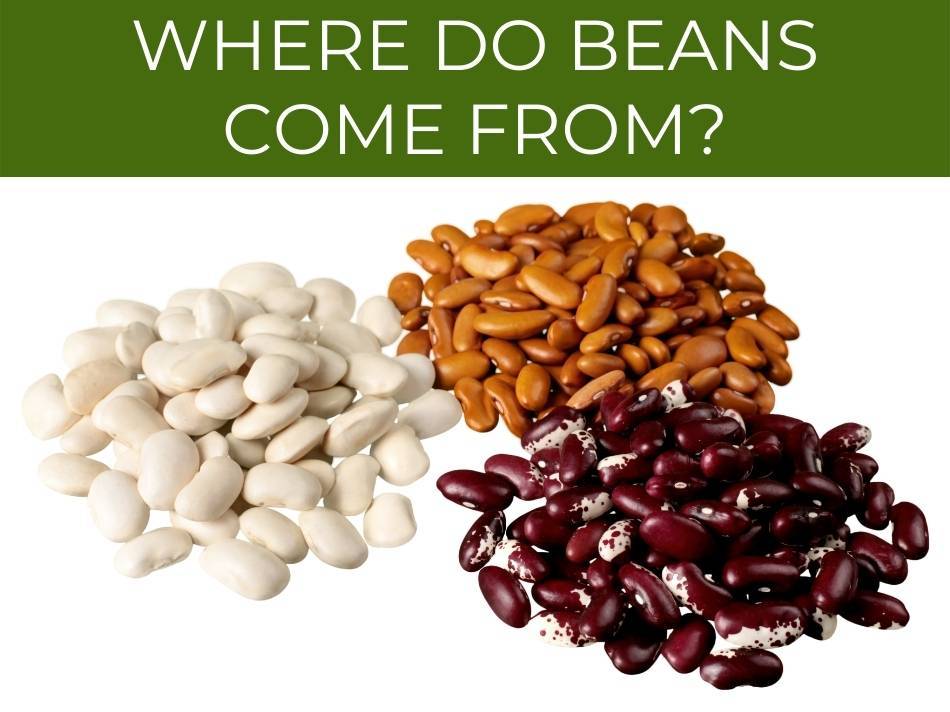Beans are a staple in diets all around the world and there are thousands of varieties. But where do beans come from? The bean does not grow naturally all around the world. Like many plant varieties, it emerged from a specific area, and varieties were developed as the plant spread around the world. Some things we call beans, like coffee beans, are not beans at all.
The first real beans were in Central and South America. Central America is also where tomatoes come from, and other vegetables make eating enjoyable. Beans are warm-weather plants that have a short growing season. They are not too hard to grow and adapt to many climates. It’s easy to see how this plant spread around the world easily.
Beans emerged from Central America and spread around the world. Since that time, thousands of varieties of beans have been developed. There are about 400 varieties that are the most common, but there are many more varieties around the world. Beans have a lot of protein, fiber, iron, potassium, and other good things. They are also very low in fat and cholesterol. The health benefits of beans are many, and those benefits tend to be available no matter what variety of beans is developed.
Beans are adaptable and can grow anywhere almost. See our story on growing vegetables indoors.
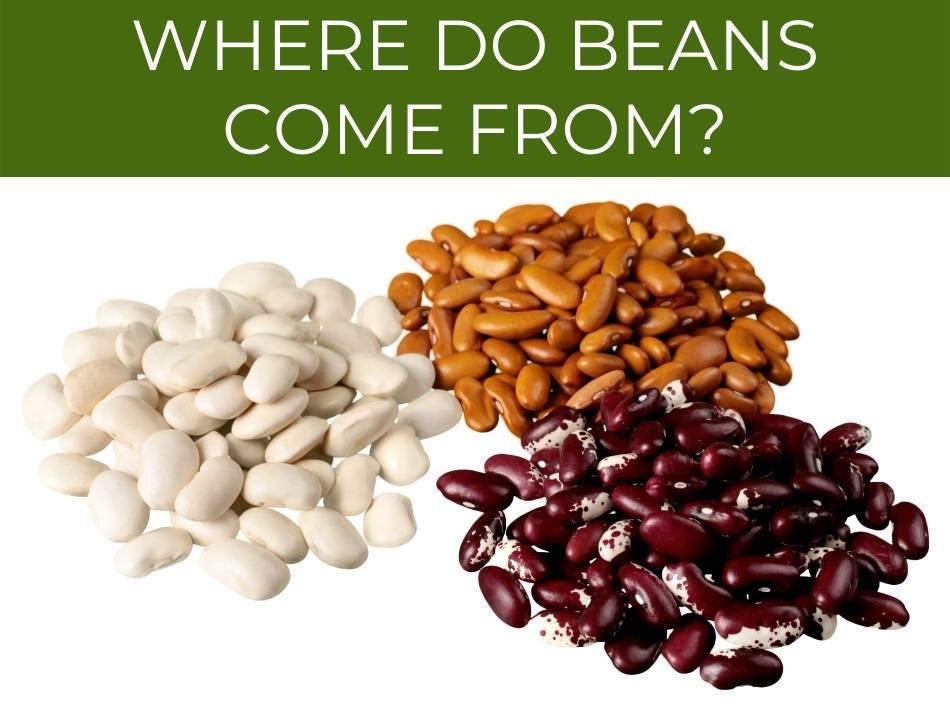
Where do beans come from?
Apart from the geography, beans come from vines.
Beans grow in pods, and the vines need some support as they grow.
Beans develop inside the pods.
Some beans can be eaten along with the pods, and some pods are shelled for the beans.
Bean bushes have also been developed that take care of the need for support for the vines.
Beans originated in Central America, and in parts of South America.
Native populations used them for centuries as a staple in their diet.
Europeans exported them back to Europe, and from there they spread around the world.
Different cultures have developed many varieties of beans over the centuries.
While beans emerged from Central America, coffee also comes from there.
It may be surprising to know that coffee beans are not beans but are actually seeds from the fruit that grows on coffee plants.
Beans are strictly vegetables and have a lot of health benefits.
Beans are known to reduce the risk of heart attack, and they also help reduce cholesterol, which can lead to heart issues.
See the life cycle of a bean plant.
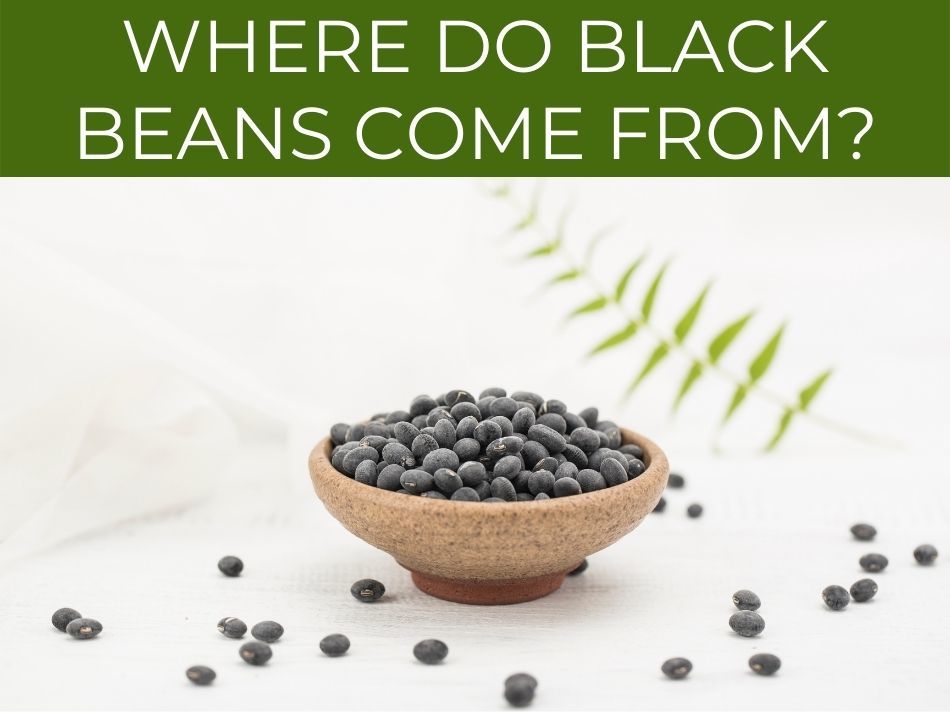
Where do black beans come from?
Black beans may be one of the oldest varieties of beans in existence.
They can be traced back at least 7,000 years to Mexico, and they were significant in the Mayan civilization in Mexico.
Black beans are meaty, heavily textured dark beans, more purple than black really, and they are a key part of Mexican, the Caribbean, and Brazilian cuisine.
The black bean came from Central America, ranging from Southern Mexico, well into modern-day Brazil.
It is known to have been part of Meso-American culture as far back as recorded history goes.
They were essential to the diet of the Maya, and even today the black bean is an immensely popular staple of the Brazilian diet.
Mayan cultures had a black bean and pork soup called “Bul Keken” which is still around today in those regions.
Black beans have grown in popularity and have several varieties within what are called black beans.
Michigan State University scientists have developed two varieties.
Michigan is now the world’s largest exporter of black beans, and most of those grown in Michigan are exported to Mexico.
Black beans have also become more popular in the United States as they are high in protein and fit in well with more health-conscious diets.
Check out the complete article on how do beans grow.
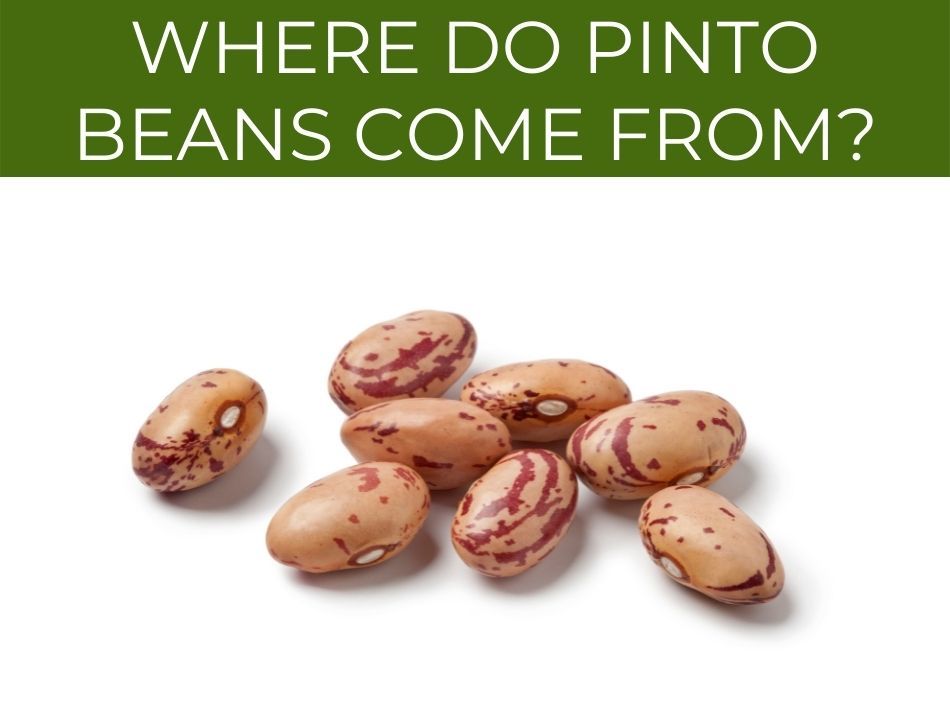
Where do pinto beans come from?
Pinto beans are another variety of beans from Mexico.
Pinto beans require little maintenance or care and can grow in relatively dry areas.
They take 3 – 5 months to grow to maturity.
Pinto beans can be eaten as a green bean in a pod, or they can be shelled and stored as a dry bean if allowed to keep growing.
Pinto beans are available in the form of a vine, or in a bush.
Pinto beans were called ” painted beans” by the Spanish because of their colorful shells.
The beans were cultivated by the ancient Mexican and Peruvian cultures as long as 5,000 years ago.
Other beans, like kidney beans, black beans, and others, are also called common beans and are part of the same species.
Pinto beans have more fiber than any other bean, and, like other beans, have virtually no fat or cholesterol.
This makes them a healthy choice, and they are one of the most commonly consumed beans in America.
The beans are small and have a lot of flavors.
They are often used in Mexican and Latin American cuisine.

Where do coffee beans come from?
Coffee beans are not beans from the standpoint of plant science.
They do look like beans though, so it makes sense to give them the “bean” moniker.
The coffee plant is a relatively small bush that produces red fruit.
The seeds from that red fruit are what we call coffee beans today.
Coffee now grows around the globe and it is one of the few plants called beans that did not originate in the Americas.
The first coffee that was made into the beverage we are familiar with today came from Ethiopia or Yemen.
There is a story of a goat herder named Kaldi, who first made the discovery in Ethiopia in about 850 a.d.
Arabian traders introduced coffee to Europe in the 16th century, and explorers took it with them to the new world.
People in France tried to grow their own, but it still grows best in tropical areas.
Coffee came to the Americas when the French started a plantation in Martinique in 1720.
Even so, there is evidence that coffee may have been grown even earlier on some Caribbean islands.
While the coffee plant did not originate in the Americas, the tropical areas were ideal for the plant.
Today, Brazil is the world’s largest producer of coffee.
Coffee is said to be good for plants, but is it? See our complete story about this popular idea.
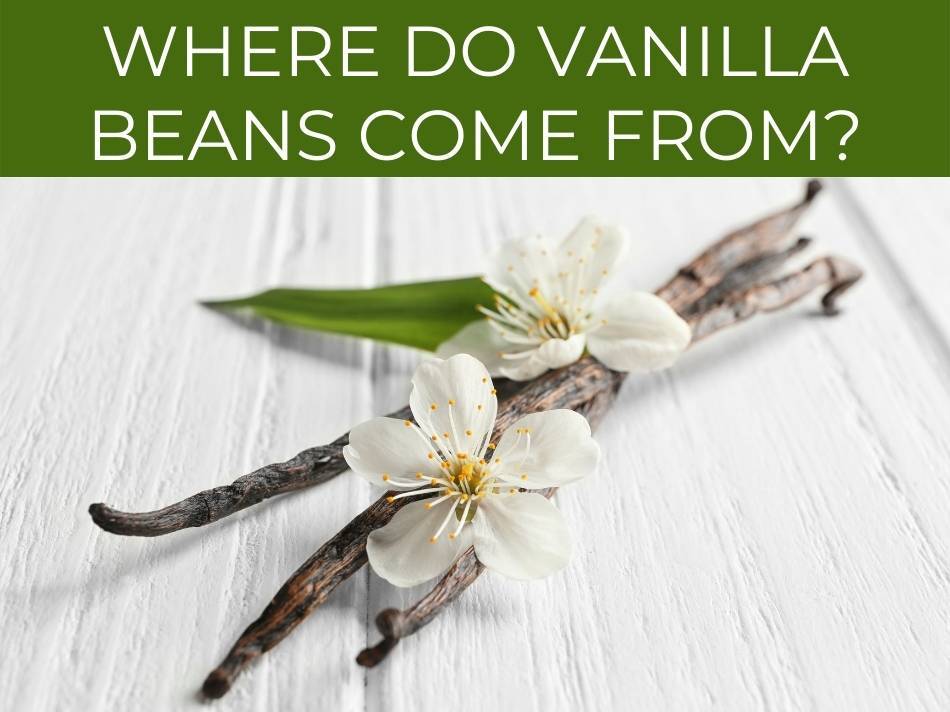
Where do vanilla beans come from?
Vanilla is a flavoring we use on many things, and it is not a bean at all.
It is the fruit of an orchid that grows only in select areas with very narrow conditions.
It is from the genus Vanilla and comes from the flower or orchid that is produced by the plant.
The plant grows like a vine on a tree, and the production of what we call vanilla is anything but simple.
The plant that produces vanilla comes from a small area of southern Mexico and Guatemala.
Ancient Mayan and Aztec cultures used it to flavor drinks like those made from the cocoa plant.
It can only grow naturally 10-20 degrees from the equator, giving it a small window geographically.
Today, the island of Madagascar, off the African coast, produces 80 percent of the world’s vanilla.
The rest comes from Tahiti and Mexico.
The vanilla plants can only be pollinated by bees native to Central America.
Commercial operations do this artificially.
Flowers bloom only one day and must be pollinated then to produce pods that make vanilla.
The pods are picked before they are ripe and put into hot water before being allowed to dry for six months.
The pods are then scraped, and the specs produce vanilla flavoring.
Pods are rare and very expensive. Vanilla is the second most expensive spice.

